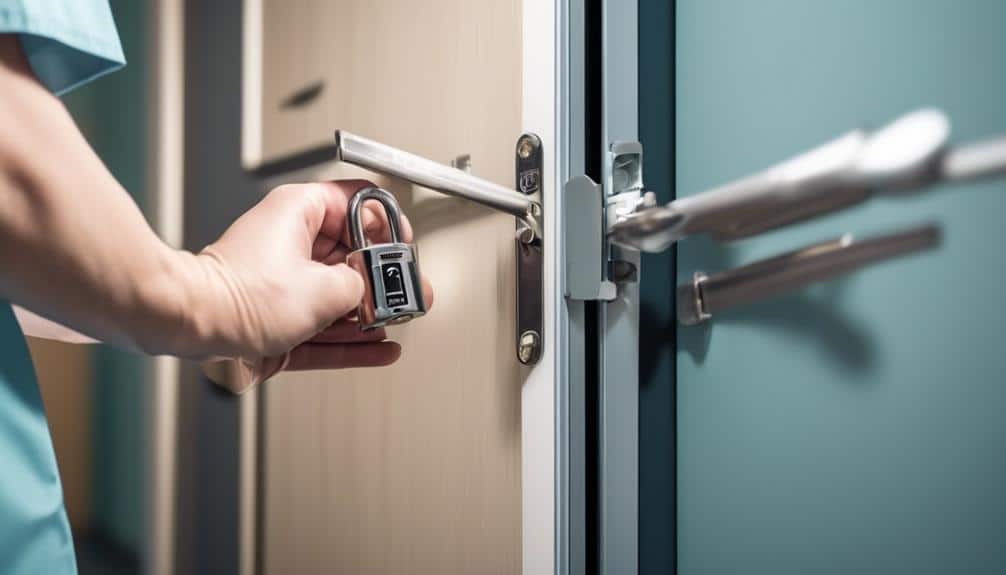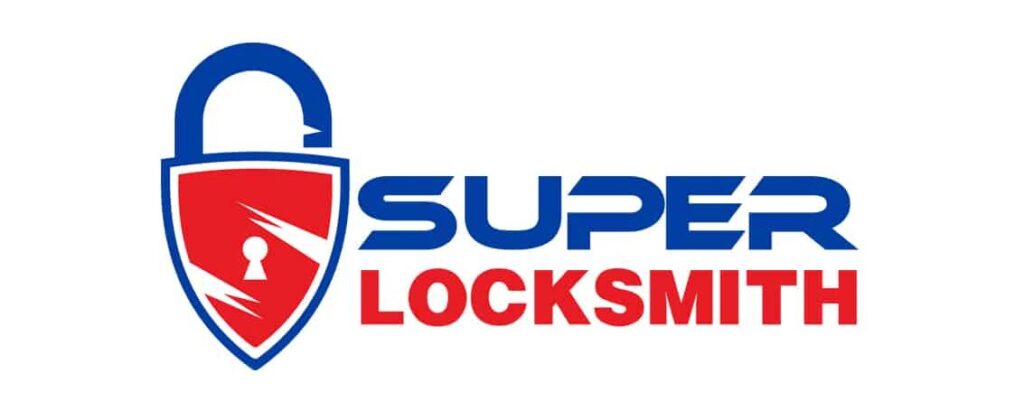In the realm of healthcare facilities, lock installation serves as an essential shield, safeguarding the sanctity and security of these vital establishments. It acts as a symbol of protection, fortifying the peace of mind for patients and staff alike.
But why exactly is lock installation so crucial? Well, it goes beyond mere physical barriers. It involves a meticulous dance between enhanced security measures, patient privacy, preventative measures against unauthorized access, and the preservation of valuable medical equipment.
However, those are just a few pieces of the puzzle. As we explore the depths of this topic, we will uncover a myriad of reasons why lock installation is of utmost importance in healthcare facilities.
So, let's embark on this journey together, shall we?
Enhanced Security Measures
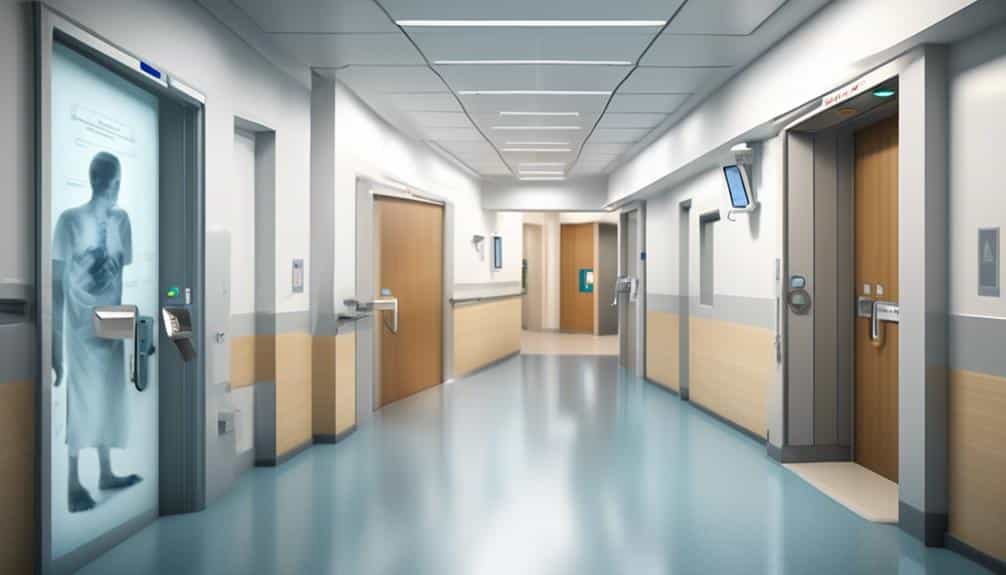
Enhanced security measures play a crucial role in safeguarding healthcare facilities against potential threats and ensuring the safety of patients, staff, and valuable assets. One of the key components of these measures is access control, which allows healthcare facilities to regulate and monitor entry and exit points.
By implementing access control systems, healthcare facilities can restrict unauthorized individuals from accessing sensitive areas, such as patient rooms, medication storage areas, and administrative offices. This helps prevent theft, unauthorized access to patient information, and potential harm to patients.
Effective access control systems utilize key management protocols to enhance security. These protocols involve the proper handling and distribution of keys to authorized personnel. By implementing a centralized key management system, healthcare facilities can maintain control over who has access to specific areas and ensure that keys aren't lost or duplicated.
Additionally, key management systems can track the usage of keys, providing a detailed record of who accessed certain areas and when.
Protecting Patient Privacy
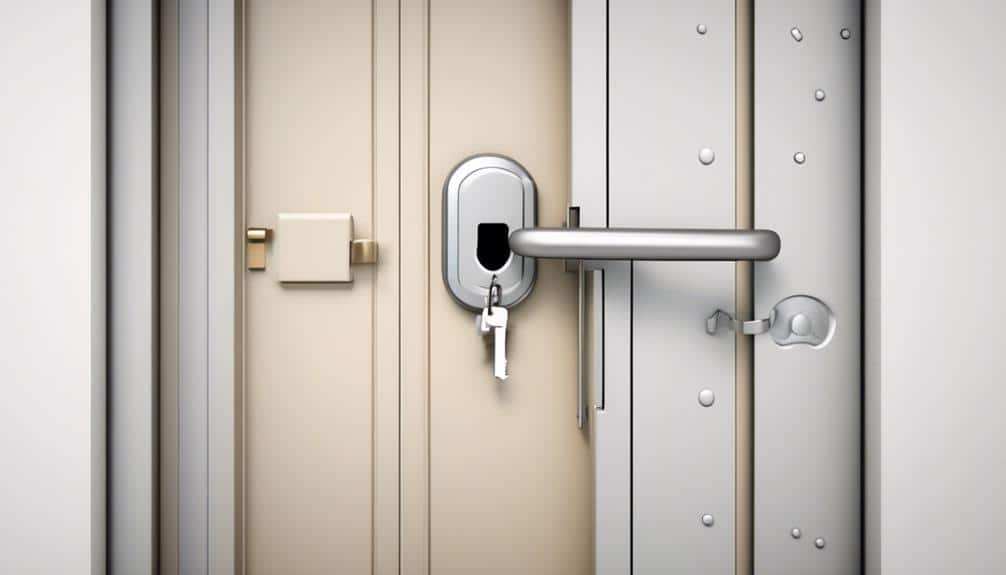
As experts in healthcare facility security, we understand the critical importance of protecting patient privacy.
Healthcare organizations are bound by strict privacy compliance requirements, such as HIPAA, that necessitate robust security measures.
Privacy Compliance Requirements
Protecting patient privacy is a crucial aspect of privacy compliance requirements in healthcare facilities. Healthcare organizations are required to adhere to stringent regulations to ensure patient confidentiality and prevent data breach consequences. To paint a picture for the audience, here are five key considerations related to privacy compliance requirements in healthcare facilities:
- Access control: Implementing secure access control measures, such as locks and keyless entry systems, to limit unauthorized access to sensitive patient information.
- Physical security: Installing robust locks on doors, cabinets, and storage areas to safeguard patient records and medical equipment from theft or unauthorized access.
- Employee training: Providing comprehensive training programs to educate staff about the importance of patient privacy, confidentiality, and the proper handling of sensitive information.
- Data encryption: Utilizing advanced encryption techniques to protect patient data when it's stored, transmitted, or shared electronically.
- Audit trails: Implementing robust tracking systems to monitor and record access to patient information, ensuring accountability and identifying any potential privacy breaches.
Preventing Unauthorized Access
To ensure the utmost protection of patient privacy, healthcare facilities must implement robust measures to prevent unauthorized access to sensitive information and maintain the confidentiality of medical records. This necessitates the implementation of strict security protocols and access control systems within the facility.
Security protocols are essential in preventing unauthorized access to patient information. These protocols include the use of unique login credentials for staff members, regular password updates, and secure authentication processes. Additionally, healthcare facilities should employ measures such as two-factor authentication and encryption to further safeguard sensitive data.
Access control systems play a crucial role in preventing unauthorized individuals from gaining access to patient records. These systems can include biometric identification, key card access, and surveillance cameras to monitor and record entry and exit activity. By carefully managing and controlling physical access to sensitive areas, healthcare facilities can significantly reduce the risk of unauthorized access to patient information.
Safeguarding Patient Information
Implementing robust security measures is crucial for safeguarding patient information and protecting patient privacy in healthcare facilities. In today's digital age, the risk of data breaches is a significant concern, making it imperative for healthcare facilities to prioritize patient confidentiality.
Here are five key measures that should be implemented:
- Encryption: Encrypting patient data helps ensure that it remains secure even if it's accessed by unauthorized individuals.
- Access controls: Implementing strict access controls limits the number of individuals who can access patient information, reducing the risk of unauthorized access.
- Audit trails: Maintaining detailed audit trails allows for the monitoring and tracking of all activities related to patient data, helping to detect and prevent any breaches.
- Employee training: Regular training on patient confidentiality and data protection is essential to ensure that all staff members understand their role in safeguarding patient information.
- Data backup and recovery: Regularly backing up patient data and having a robust recovery plan in place is crucial to minimize the impact of any potential data breaches and ensure continuity of care.
Preventing Unauthorized Access
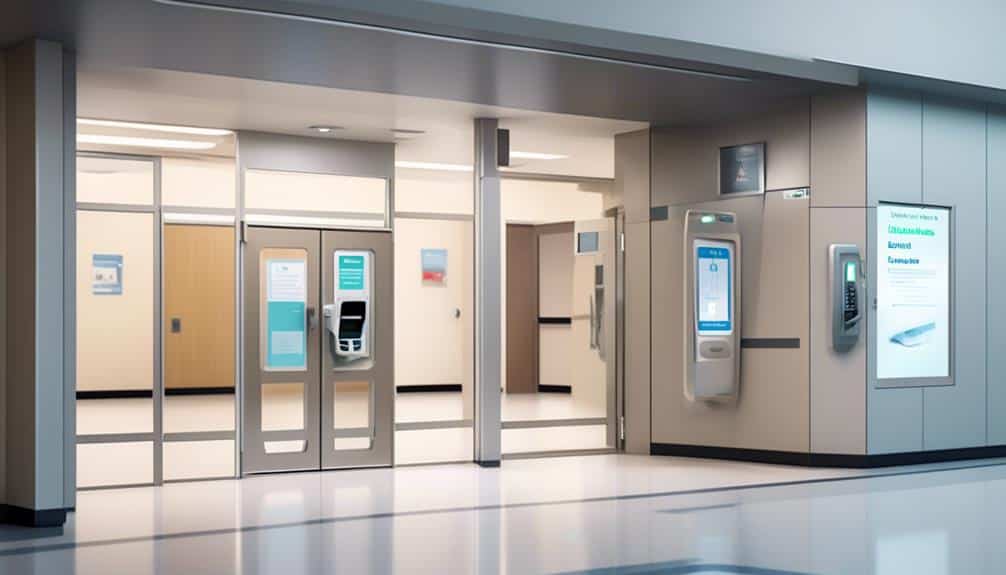
By ensuring the installation of secure locks, healthcare facilities can effectively safeguard against unauthorized access. Access control is a critical aspect of maintaining the security and privacy of healthcare facilities. Unauthorized access poses a significant risk to the safety of patients, staff, and sensitive information. Therefore, implementing robust security measures is vital to prevent unauthorized individuals from gaining entry into restricted areas.
To prevent unauthorized access, healthcare facilities should employ a multi-layered approach to security. This includes installing high-quality locks on all entrances, ensuring that only authorized personnel have access to certain areas. Electronic access control systems, such as key cards or biometric scanners, can be used to restrict access to specific individuals. These systems provide an added layer of security by keeping a record of who enters and exits each area.
In addition to physical locks and access control systems, healthcare facilities should also have strict protocols in place for issuing and managing keys and access cards. Regular audits should be conducted to ensure that access privileges are up to date and that no unauthorized copies of keys or access cards are in circulation.
Effective lock installation and access control measures not only prevent unauthorized access but also deter potential intruders. By implementing these security measures, healthcare facilities can safeguard the well-being of their patients, protect sensitive information, and maintain a safe and secure environment for everyone.
Safeguarding Medical Equipment
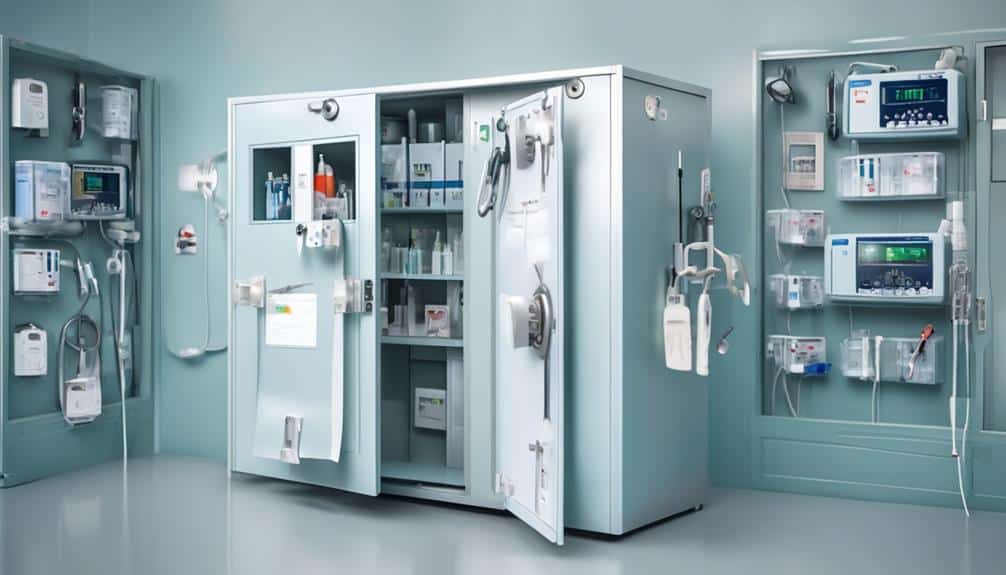
Safeguarding medical equipment requires implementing comprehensive security measures to protect valuable and essential assets within healthcare facilities.
Medical devices are critical for patient care and treatment, making it crucial to have robust equipment safety measures in place.
Here are five key considerations for medical device protection:
- Access control: Restricting access to medical equipment areas ensures that only authorized personnel can enter. This can be achieved through the use of electronic locks with unique access codes or biometric authentication.
- Surveillance systems: Installing surveillance cameras in strategic locations helps monitor and deter potential theft or tampering of medical equipment. These systems should have high-resolution capabilities and be integrated with a central monitoring station.
- Asset tracking: Utilizing asset tracking technologies, such as RFID tags or barcode systems, allows healthcare facilities to keep a record of the location and movement of medical equipment. This helps prevent loss or misplacement of valuable assets.
- Physical barriers: Securing medical equipment behind locked doors or in secure cabinets adds an extra layer of protection. These physical barriers should be made of durable materials and resistant to tampering or forced entry.
- Alarm systems: Installing alarm systems that detect unauthorized access or movement of medical equipment can alert security personnel in real-time. These systems can include motion sensors, vibration detectors, or magnetic contact switches.
Ensuring Staff Safety
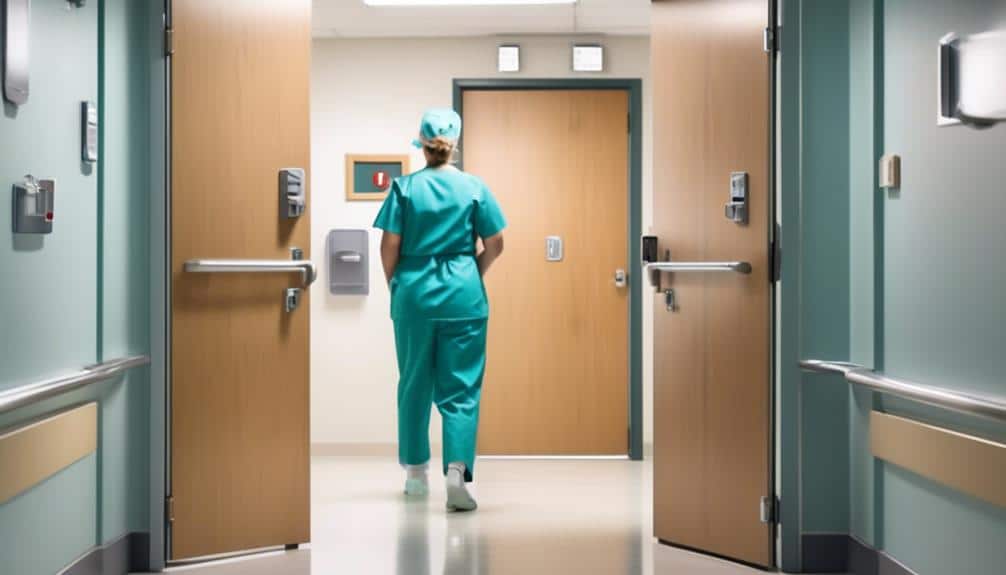
When it comes to ensuring staff safety in healthcare facilities, there are several security measures that need to be implemented. This includes installing secure locks on all entry points, such as doors and windows, to prevent unauthorized access.
Additionally, healthcare facilities must have a comprehensive emergency response plan in place to effectively handle any potential threats or emergencies that may arise.
Staff Security Measures
To ensure the utmost safety and security of our healthcare staff, it's imperative to implement comprehensive measures that prioritize their protection. Staff security measures play a crucial role in maintaining a safe working environment within healthcare facilities. Here are five key measures that should be implemented:
- Security Training: Regular training sessions should be conducted to educate staff on security protocols and procedures. This includes training on recognizing and responding to potential threats, as well as emergency response training.
- Access Control Measures: Implementing access control systems, such as key cards or biometric scanners, can restrict unauthorized entry into sensitive areas. This ensures that only authorized personnel have access to certain areas of the facility.
- Surveillance Systems: Installing surveillance cameras in strategic locations helps deter potential security breaches and provides evidence in case of incidents.
- Panic Buttons: Equipping staff members with panic buttons can enable them to quickly alert security personnel in case of emergencies or threatening situations.
- Security Personnel: Having trained security personnel present on-site can provide an added layer of protection and immediate response to any security issues.
Emergency Response Readiness
Emergency response readiness is a critical aspect of ensuring the safety of healthcare staff in the face of potential crises or threats. Healthcare facilities must prioritize emergency preparedness measures and provide thorough emergency response training to staff members. By doing so, healthcare organizations can effectively mitigate risks and protect the well-being of their employees.
Emergency response training equips healthcare staff with the knowledge and skills needed to respond swiftly and appropriately during emergency situations. This includes training on evacuation protocols, emergency communication procedures, and the use of emergency equipment. By familiarizing staff with these procedures, healthcare facilities can enhance staff safety and minimize the potential for injury or harm.
Furthermore, emergency preparedness measures, such as conducting regular drills and simulations, ensure that staff members are well-prepared and confident in their ability to respond during emergencies. These measures help identify gaps in emergency response plans, allowing healthcare facilities to make necessary improvements and adjustments to enhance staff safety.
Compliance With Regulatory Standards
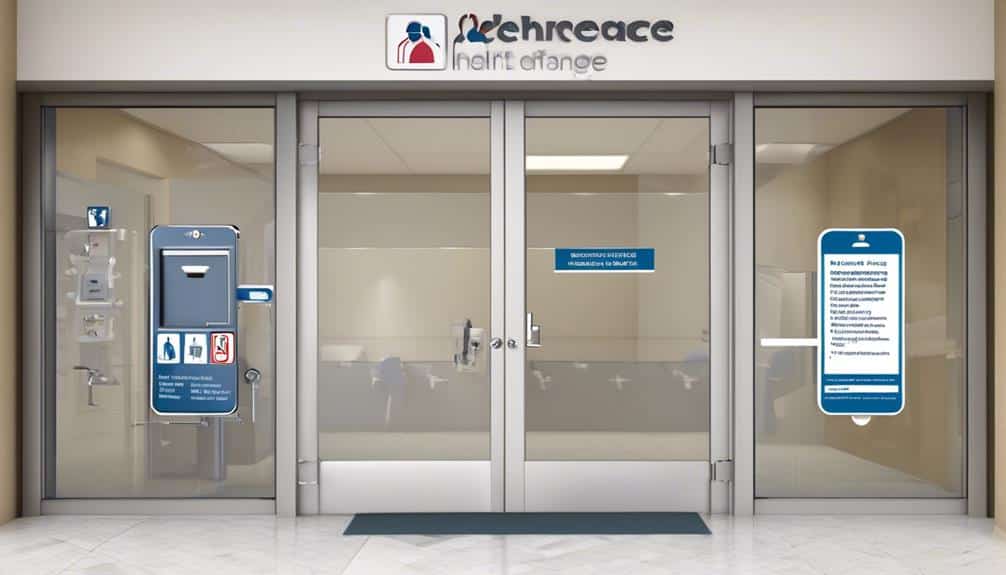
Why is compliance with regulatory standards crucial for healthcare facilities when it comes to lock installation?
Ensuring compliance with regulatory standards is essential for healthcare facilities as it helps maintain a safe and secure environment for patients, staff, and visitors. When it comes to lock installation, healthcare facilities must adhere to specific requirements to meet fire codes and infection control measures.
Here are five key reasons why compliance with regulatory standards is vital for lock installation in healthcare facilities:
- Fire Safety: Healthcare facilities must install locks that comply with fire codes to prevent the spread of fire and smoke. This includes using fire-rated doors and locks that automatically unlock during emergencies.
- Infection Control: Locks in healthcare facilities need to be designed to minimize the risk of infection transmission. Installing locks that are easy to clean and disinfect helps maintain a hygienic environment.
- Patient Privacy: Compliance with regulatory standards ensures that locks are installed to protect patient confidentiality and prevent unauthorized access to medical records and sensitive information.
- Emergency Preparedness: Lock installation in compliance with regulatory standards enables healthcare facilities to effectively respond to emergency situations, such as lockdowns or evacuations.
- Accessibility: Regulatory standards mandate the installation of locks that are easily accessible for individuals with disabilities, ensuring equal access to healthcare facilities.
Minimizing Risk of Theft or Vandalism
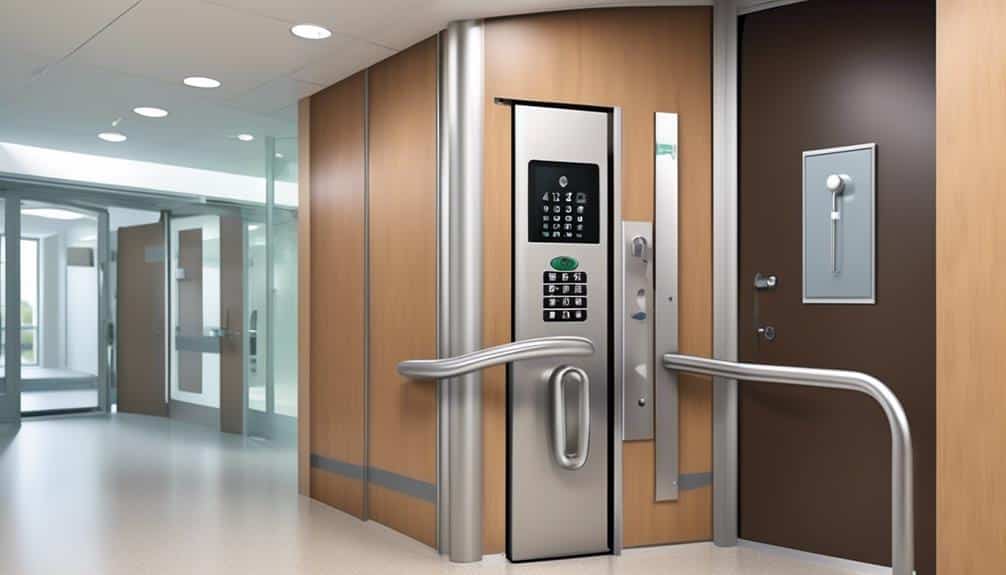
Compliance with regulatory standards for lock installation in healthcare facilities not only ensures a safe and secure environment but also plays a crucial role in minimizing the risk of theft or vandalism. Implementing appropriate security measures is essential to protect patients, staff, and valuable assets within healthcare facilities. By installing robust locks and access control systems, healthcare facilities can significantly reduce the chances of unauthorized access, theft, or vandalism.
One effective security measure is the installation of high-security locks, which offer enhanced resistance against picking, bumping, or drilling. These locks provide an additional layer of protection and help prevent unauthorized entry. Another important security feature is the use of access control systems, such as key cards or biometric scanners. These systems allow for restricted access to certain areas, ensuring that only authorized personnel can enter sensitive areas such as medication storage or patient records.
To emphasize the importance of security measures in healthcare facilities, the following table highlights some key benefits:
| Security Measures | Benefits |
|---|---|
| High-security locks | – Reduced risk of theft and vandalism<br>- Enhanced patient safety<br>- Protection of valuable assets |
| Access control systems | – Restricted access to sensitive areas<br>- Improved accountability<br>- Better control over facility access |
Maintaining a Secure Environment
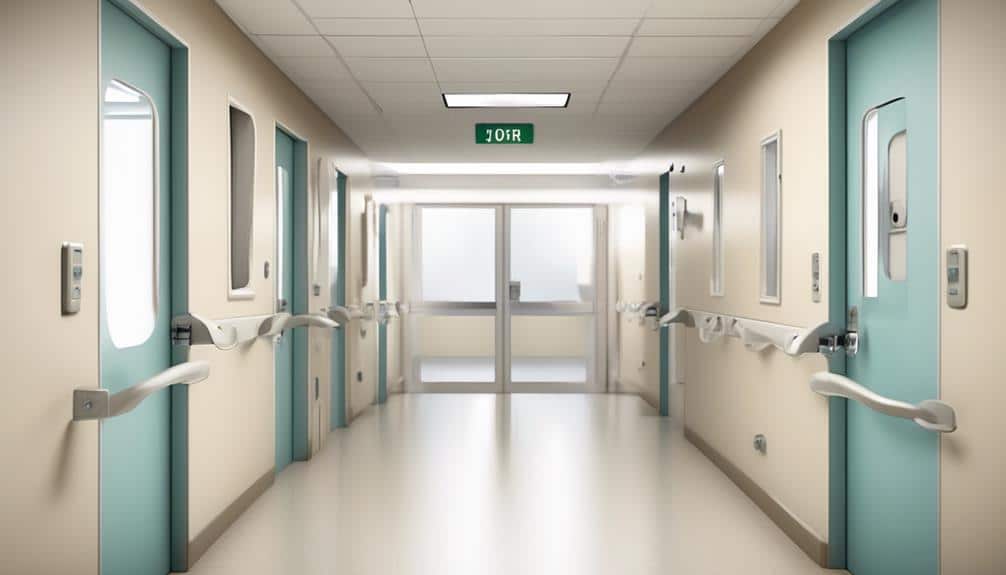
To maintain a secure environment in healthcare facilities, it's imperative to implement comprehensive security protocols and regularly assess and update them. This ensures that the facilities remain safe for patients, staff, and visitors, while also preventing security breaches that could compromise sensitive information or patient safety.
Here are some key measures that healthcare facilities should consider to maintain access control and prevent security breaches:
- Implementing a robust access control system: This includes using electronic key cards or biometric systems to restrict access to authorized personnel only.
- Conducting regular security audits: Regular audits help identify any vulnerabilities in the security system and allow for timely remediation.
- Training staff on security protocols: Educating staff on the importance of following security protocols, such as properly securing patient information and reporting any suspicious activities, is crucial to maintaining a secure environment.
- Installing security cameras: Surveillance cameras placed strategically throughout the facility can deter potential security breaches and provide evidence in case of an incident.
- Restricting access to sensitive areas: Limiting access to areas where sensitive information or valuable assets are stored can significantly reduce the risk of security breaches.
Frequently Asked Questions
How Can Lock Installation Help in Preventing the Spread of Infectious Diseases Within Healthcare Facilities?
Lock installation plays a crucial role in improving infection control and enhancing patient safety within healthcare facilities.
By effectively securing entrances and restricting access, locks prevent unauthorized individuals from entering sensitive areas, minimizing the risk of infectious diseases spreading.
Locks also enable healthcare staff to control the flow of people, ensuring that only authorized personnel enter and exit designated areas.
This level of control and security is essential for maintaining a safe and hygienic environment within healthcare facilities.
Are There Any Specific Types of Locks or Security Systems That Are Recommended for Healthcare Facilities?
When it comes to securing healthcare facilities, the use of specific types of locks and security systems is crucial. Smart lock technology and access control systems are highly recommended for healthcare facilities.
These advanced systems provide enhanced security and control, allowing authorized personnel to easily access different areas while keeping unauthorized individuals out.
What Are Some Common Vulnerabilities in Healthcare Facilities That Lock Installation Can Address?
Common vulnerabilities in healthcare facilities that lock installation can address include physical security risks and access control issues.
Without proper lock installation, these facilities may be susceptible to unauthorized entry, theft, and compromised patient confidentiality.
By implementing robust lock systems, healthcare facilities can enhance their overall security measures, restrict access to sensitive areas, and protect valuable assets.
This helps ensure the safety and privacy of patients, staff, and sensitive information within the facility.
Can Lock Installation Help in Reducing the Risk of Patient Elopement or Unauthorized Exits?
Lock installation plays a crucial role in reducing the risk of patient elopement or unauthorized exits. By securing the premises, we enhance patient safety and minimize liability.
Unauthorized exits can lead to serious consequences, such as patient harm or legal issues. Installing high-quality locks and access control systems ensures that only authorized individuals can enter or exit designated areas, preventing potential elopement or unauthorized access.
This proactive approach not only safeguards patients but also mitigates risks and promotes a secure healthcare environment.
How Does Lock Installation Contribute to the Overall Efficiency and Smooth Operation of Healthcare Facilities?
Improving access control and enhancing patient safety are two key reasons why lock installation is essential for healthcare facilities.
By implementing effective lock systems, we ensure that only authorized personnel have access to restricted areas, minimizing the risk of unauthorized entry and potential security breaches.
Additionally, locks help prevent patient elopement or unauthorized exits, ensuring their safety and well-being.
The installation of reliable lock systems contributes to the overall efficiency and smooth operation of healthcare facilities by providing a secure environment for patients, staff, and valuable assets.

